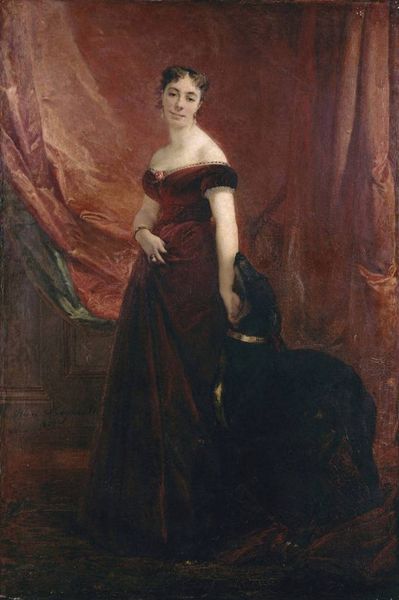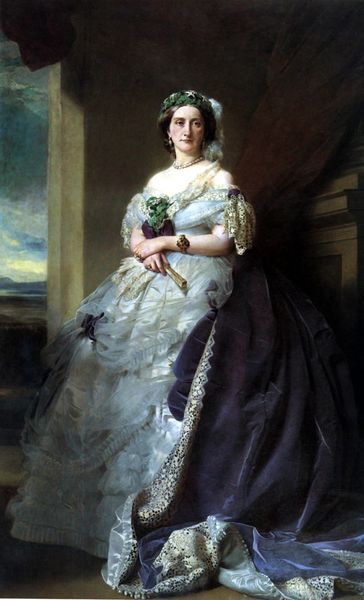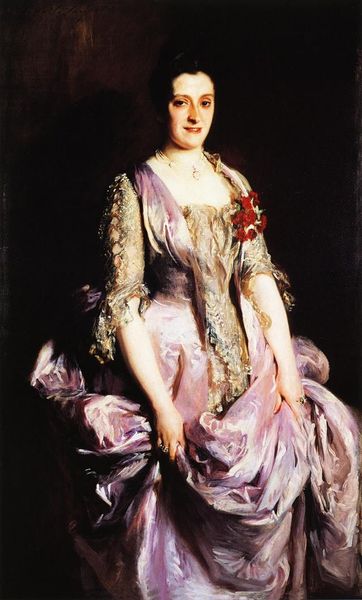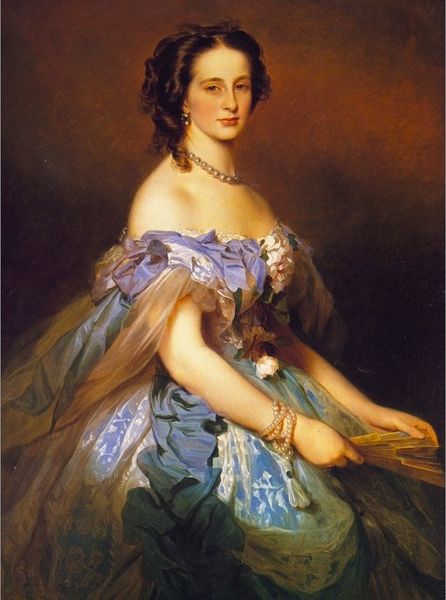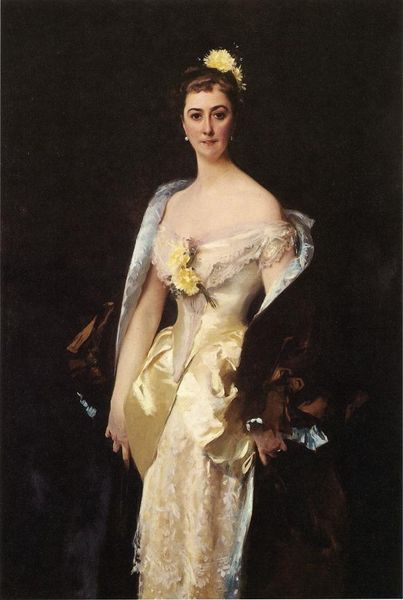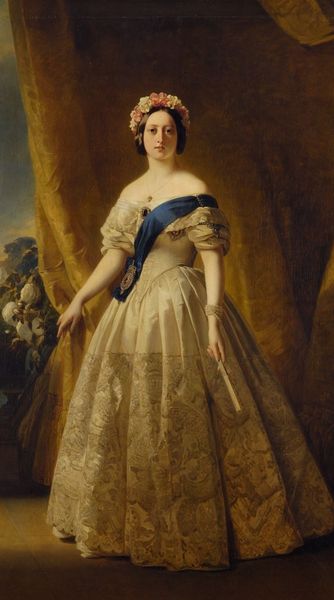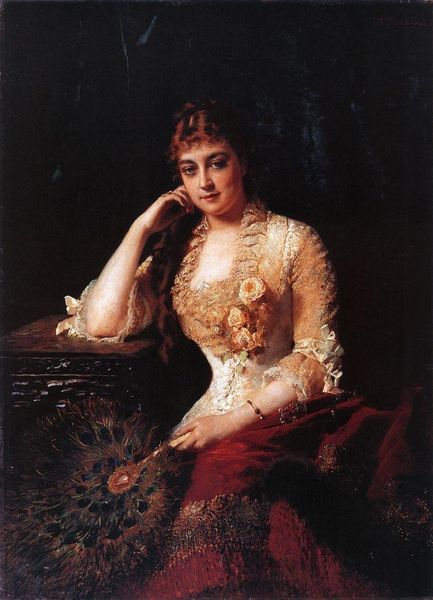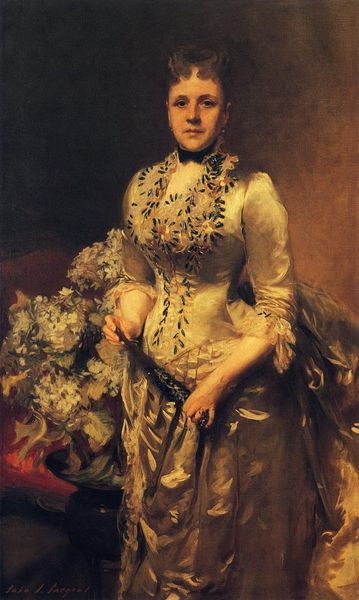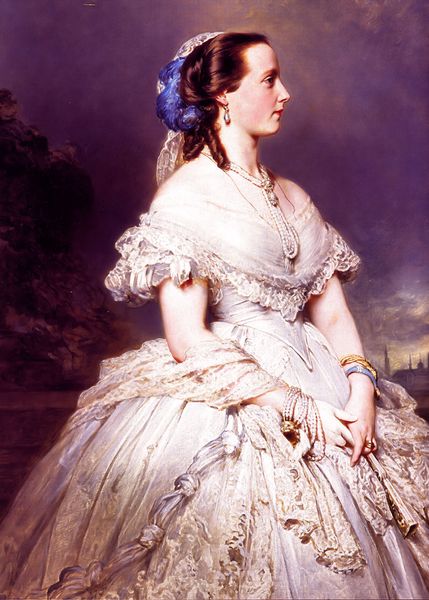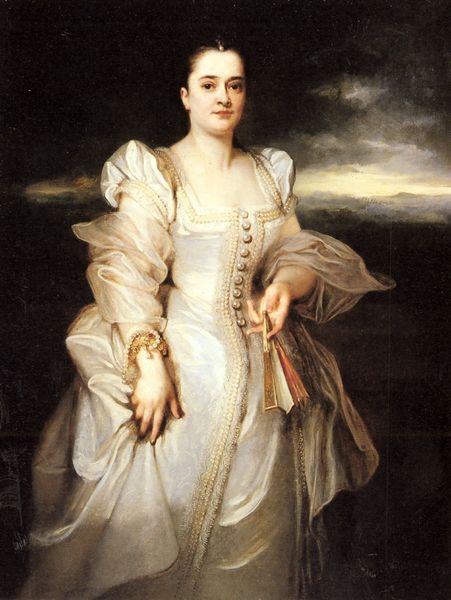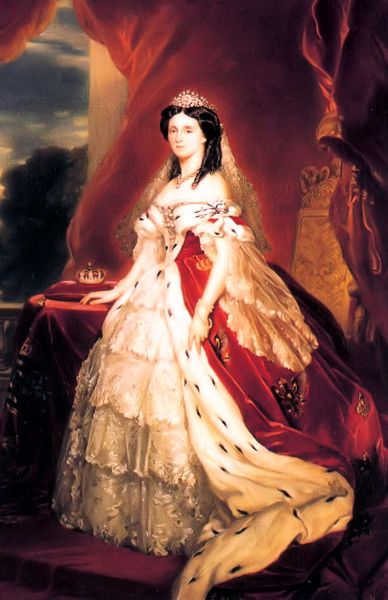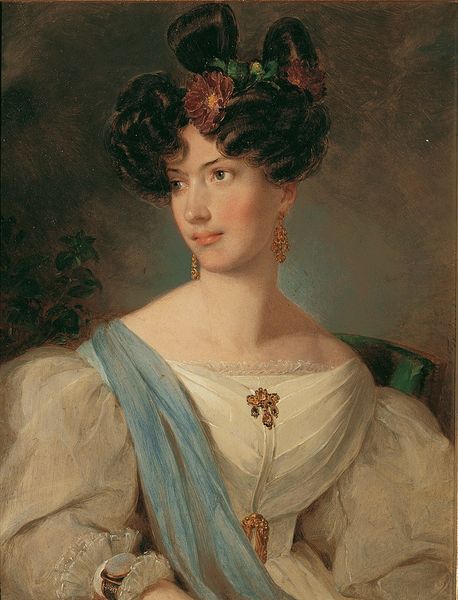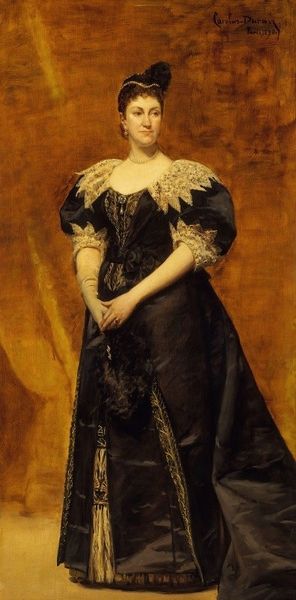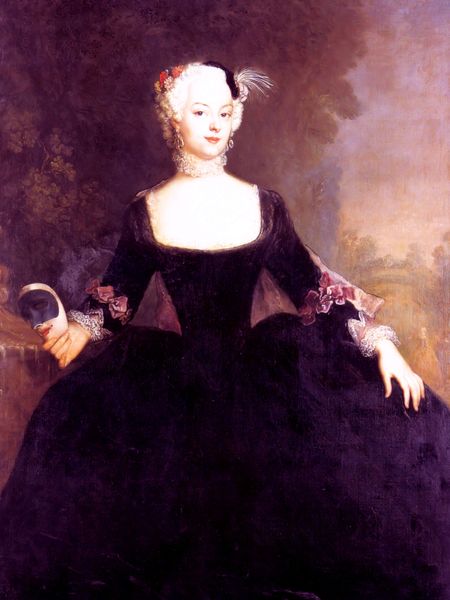
painting, oil-paint
#
portrait
#
painting
#
oil-paint
#
famous-people
#
romanticism
#
history-painting
#
academic-art
#
female-portraits
Copyright: Public domain
Editor: Let's take a look at "Princess Catherine Dadiani," an oil painting by Franz Xaver Winterhalter. I'm struck by how regal she appears, almost staged in a way. What aspects stand out to you? Curator: This painting is incredibly interesting from a socio-political lens. Winterhalter was highly sought after by European royalty. Paintings like this served as powerful tools in shaping public perception of these figures, projecting an image of power, wealth, and dynastic continuity. Do you notice any details of her dress or adornments that might contribute to that? Editor: Well, there's the tiara, of course. And all that lace; it looks incredibly expensive and ornate. Plus the jewels at her throat and bosom. She definitely looks wealthy! Curator: Exactly. Consider the context. This wasn't just about personal vanity. These images reinforced hierarchical structures. Portraits became vehicles for conveying messages about legitimacy and national pride. Think about how fashion and even pose become coded languages, understood by the elites, influencing their policies. In today’s age, we can think of these figures in the portrait as being influencers of the past. How do you think such a display would impact audiences viewing it then? Editor: I guess it would reinforce the idea that she and her family were born to rule, chosen by destiny to occupy these positions of authority. Curator: Precisely! It highlights how art, even seemingly straightforward portraiture, operated within complex power dynamics, reflecting and perpetuating existing social orders. This painting and so many like it become documents to decipher the messages that a social class needed to solidify its influence. Editor: That’s fascinating. I always thought of portraits as simply representations of individuals, but now I see how much more they can tell us about the societies that produced them. Curator: It is easy to overlook the complex narratives, however this lens invites the study of historical social dynamics using Art History.
Comments
No comments
Be the first to comment and join the conversation on the ultimate creative platform.
